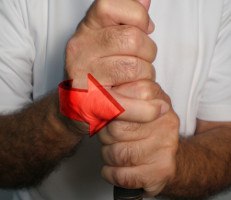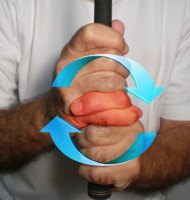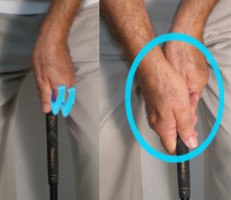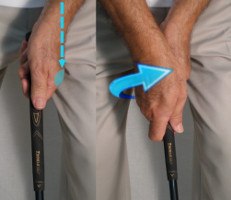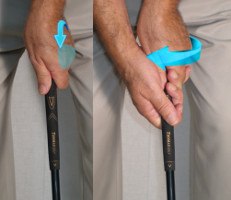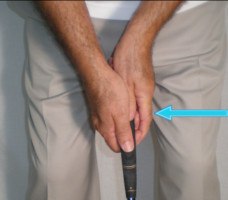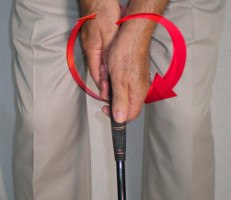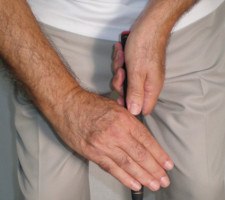Pros and Cons of Every Golf Grip Style |
Best Grip? Overlapping vs Interlocking |
Grip style: Vardon (overlapping) |
Hand position: Neutral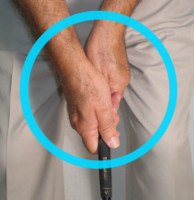 |
Putting grip style / hand position: Reverse overlap / neutral
|
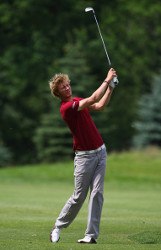
It was a familiar story: English golf prodigy claims top 5 finish at the Open Championship as an amateur, turns pro and… Nothing much happens. Justin Rose lived it first. Then Chris Wood followed his footsteps.
To be sure, Wood’s early days as a pro weren’t nearly as abysmal as Rose’s. Wood authored several near-misses on the European Tour, finally breaking through for his maiden victory in 2013.
Enough of the backstory. Let’s look at Chris Wood’s grip.
At 6’6”, Wood is well built with a big set of hands. His grip is unremarkable, which is a good thing – it’s nice and neutral, making it easy to get the club on plane and play a variety of shots.
There is one interesting note about Wood’s grip that you may find helpful. As a junior, Wood’s hands would often slip off the club during his takeaway, which he attributes to a pronounced forward press. To solve the problem, his coach affixed double-sided tape to his grips for practice, which prevented Wood’s hands from moving off the club while he pounded hundreds of range balls. Eventually, his hands “learned” not to let go.
Wood eliminated the forward press as well, though he occasionally revisits the tape drill to reinforce his hands’ “memory.”
When putting, Chris Wood’s grip is standard issue – left hand above the right, left forefinger stretched across the right fingers in the reverse-overlap style. His hands do appear slightly less unified than many pros’, however. This hold may invite added wrist action, but it can also enhance one’s feel.
